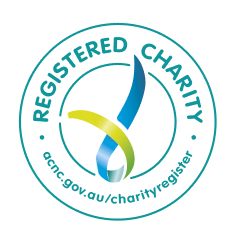

ICMEC Australia serves as a crucial resource in the fight against child sexual exploitation and abuse (CSEA). We are boldly confronting this issue when most would rather avoid it. Alongside our coalition of partners, we strive to proactively combat and prevent its occurrence.
Our mission is clear: to support and strengthen the professionals who detect, report, prosecute, and prevent CSEA. As an independent not-for-profit organisation, we collaborate with various stakeholders, such as financial services and corporate entities, law enforcement, policymakers, academics, and NGOs, to develop strategies to protect children from harm.
Through commitment to data-driven initiatives, training, capacity-building, and research, ICMEC Australia works tirelessly to prevent and combat CSEA crimes, aiming to create a safer world for children and young people.
In Australia, more than one in four children are sexually abused (ACMS 2023). This statistic includes over one in three girls and almost one in five boys.
Independent data shows we are experiencing a year-on-year increase in the sexual exploitation and abuse of children.
The widespread use of technology around the world is changing how children can be targeted and abused. Sadly, it allows perpetrators of CSEA to reach victims easily through various ways. Abuse can be recorded and distributed using online technology, causing repeated trauma for victims as the content is shared and reshared.
The distribution, production, or promotion of CSEA can occur in the virtual or physical world. Children and young people depicted in this material experience physical, psychological, and emotional harm. Their abuse can be recorded and distributed, further amplifying their suffering.
The sexual abuse and exploitation of children, facilitated online, includes a range of offences, which include:
AI-generated CSAM
The use of AI to generate CSAM that looks like it involves real children (or based on images, audio or other depictions of real children).
Live streaming of abuse
Real-time broadcasting of the exploitation and abuse of children.
Online grooming
When an adult makes online contact with someone under the age of 16 with the intention of establishing a relationship to enable sexual abuse.
Travelling to offend
An expressed desire or intent either to travel to another location to sexually abuse a child, or to arrange for the victim to travel to meet the offender with the same intent.
Child sexual abuse material (CSAM)
Material that shows or describes child sexual abuse. Under Australian Commonwealth legislation, it is an offence to possess, produce, supply or obtain such material.
Image-based abuse
Non-consensual sharing of intimate images, nude or sexual images, or a threat to share the content is made.
Sexual extortion (sextortion)
Online blackmail where a perpetrator threatens to reveal explicit images of a person unless they give in to their demands, which are sometimes for financial gain.
Self-generated CSAM
Sexual images that are taken by a person of themselves where the person is under the age of 18.
For more extensive information and data on online child sexual exploitation and abuse in Australia, please refer to the ACCCE and the eSafety Commissioner.
The Childlight - Global Child Safety Institute estimates that in the past year alone, over 300 million children were subject to abuse behaviours online (Childlight, 2024).
According to the Internet Watch Foundation (IWF), the most severe category of child sexual abuse material has doubled since 2020 (IWF, 2022).
Quarterly sextortion reports to eSafety increased from 600 in 2022 to 1700 in the same quarters of 2023 (eSafety, 2023).
In 2022, the IWF confirmed a total of 255,570 URLs contained images or videos of children suffering abuse (IWF, 2023).
eSafety reported that close to half of young people aged 14-17 in Australia had received a sexual message from someone online in the past year (eSafety, 2022).
Conversations with children on social gaming platforms can escalate into high-risk grooming situations within 19 seconds, with an average grooming time of just 45 minutes. (WeProtect, 2023).

ICMEC Australia acknowledges Traditional Owners throughout Australia and their continuing connection to lands, waters and communities. We pay our respects to Aboriginal and Torres Strait Islanders, and Elders past and present.